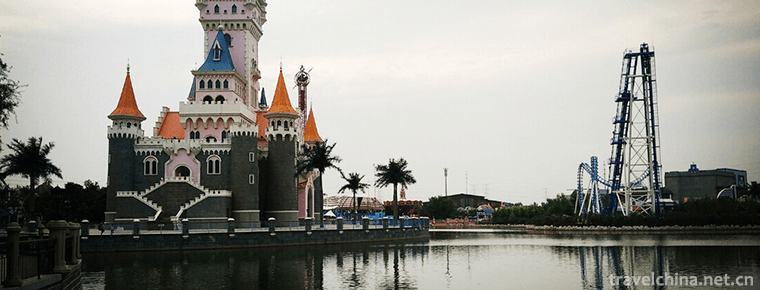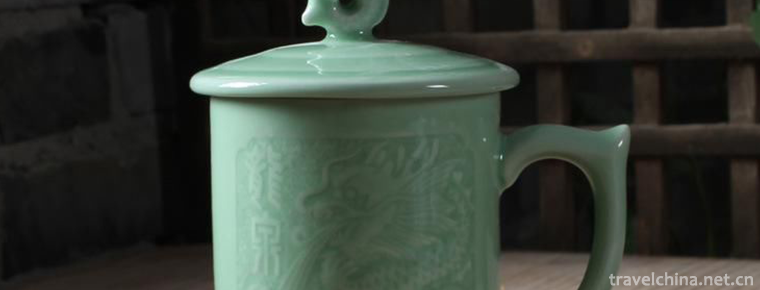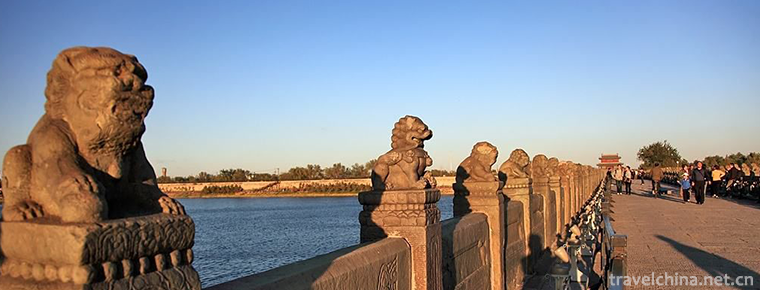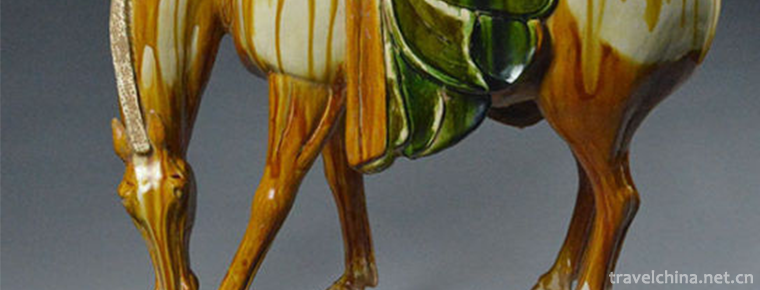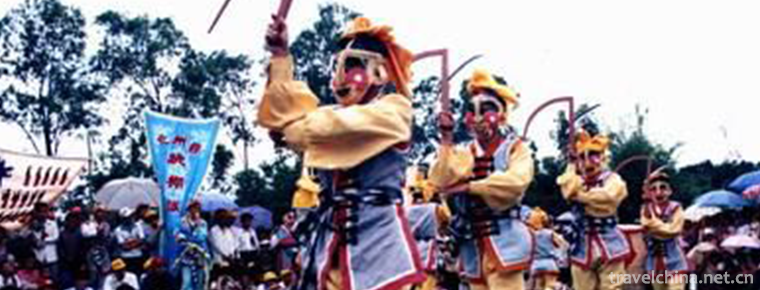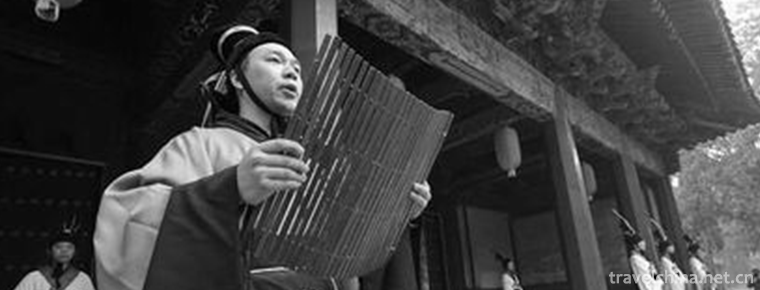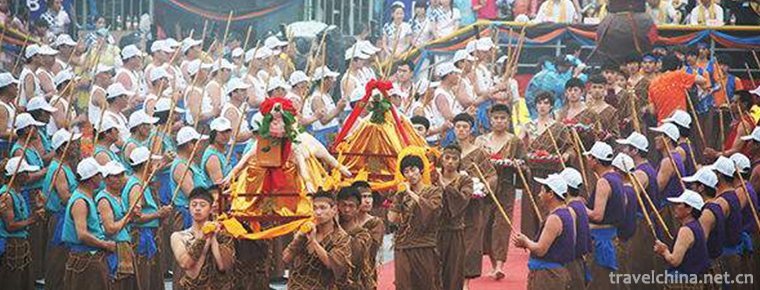Carved lacquer art
Carved lacquer art
Lacquer carving, traditional handicraft in Chongwen District, Beijing, is one of the national intangible cultural heritage.
The process of carving lacquer is very complicated. It involves 10 processes, such as design, tire making, burning blue, floor making, painting, painting, sculpture, polishing, interior making and old making.
On May 20, 2006, the art of carving and lacquering was approved by the State Council of the People's Republic of China to be included in the first batch of national intangible cultural heritage list, project number_-50.
historical origin
Carved lacquer in the Tang Dynasty
According to the records of Huang Cheng's "Bian Decoration Records" in the Ming Dynasty, carved lacquer originated in Sichuan and Yunnan in the Tang Dynasty, but no carved lacquer works of the Tang Dynasty were seen later.
Carved lacquer in the Song Dynasty
Song Dynasty is the period of development of carving and lacquering technology. Both "Tie Hong" and "Tie Rhino" have appeared. Beijing Palace Museum has a delicate "Tie Red Box with Osmanthus Flowers" handed down from ancient times, and Yuanjue Temple in Japan also has "Tie Black Plate with Zhu Jindi, Tu Jindi, Drunken Weng Pavilion" carried by Xu Ziyuan, a survivor of the Song Dynasty who traveled east to Japan. The technology of Tie Rhino has been very mature in the Song Dynasty, and is Many rhino-picking instruments were unearthed from tombs of the Southern Song and Jin Dynasties. For example, the rhino-picking mirror box unearthed from the tomb of the Southern Song Dynasty in Jintan, Jiangsu Province, is a highly skilled work. The mirror box has a diameter of 15.4 cm, a length of 27 cm, wooden tires, thick lacquer layer and a knife edge. It is now hidden in Changzhou Museum. When it was unearthed, there was a mirror-picking inside the box, which shows that the rich people at that time were rich. Home has been in love with carved lacquer products for ten years in daily life.
Yuan Ming carved lacquer
In the Yuan Dynasty, with the flow of craftsmen, carving lacquer technology was introduced to Beijing from Jiaxing, Zhejiang and other places. As the craftsmen of the Yuan Dynasty carved names on the bottom of their works, they produced a large number of excellent works, which were later treasured in the Palace Museum. The carving lacquer technology of the Yuan Dynasty passed down from generation to generation through the artists to the Ming Dynasty. In the early Ming Dynasty, the demand for imperial palaces and national ceremonies increased day by day. The Imperial Supervisor specially set up an orchard factory in Beijing to make lacquerware, and called on Zhang Degang, son of the Yuan Dynasty artist, to preside over it. Excellent craftsmen from all over the country were gathered in Beijing. The carving and lacquer artists worked hard and consulted with each other. The carving and lacquer technology was improving day by day, and different manufacturing techniques and artistic styles were integrated with each other. Finally, the unique aspects of Beijing's carving and lacquer technology were created. Appearance. Artistically, the early carved lacquer products manufactured by orchard factories focused on grinding. They were glossy, simple and rich, which was incomparable with the previous carved lacquer. At the end of the Ming Dynasty, carved lacquer manufacturing began to flourish after a period of shrinkage, and at the beginning of the Qing Dynasty, carved lacquer technology began to flourish.
Carved lacquer in Qing Dynasty
In Beijing, the Qing Dynasty's carving and lacquer technology followed the orchard factories of the Ming Dynasty and set up a building office to specialize in the production of carving and lacquer products. Because of its high cost, the Qing Dynasty's carving and lacquer products were mostly products of the royal building office. In the mid-Qing Dynasty, due to the love of Emperor Qianlong, the court supervised a large number of carving and lacquer works, such as screen, several steps, tables and chairs, small bottles, cans, boxes, plates and even days. Often furnished, there is everything. Carving and lacquer works of this period have rigorous composition, fine carving, complicated patterns and complex crafts, forming a graceful and elegant, delicate and beautiful artistic style.
Compared with the Ming Dynasty, the carved lacquer of the Qing Dynasty has many distinct characteristics. The carved lacquer of the Ming Dynasty is dark red and bright red in the Qing Dynasty; the carved lacquer knife of the Ming Dynasty is round and polished, while the knife marks of the Qing Dynasty are exposed and not polished; the carved lacquer of the Ming Dynasty is solemn and thick, while the carved lacquer of the Qing Dynasty is complex and slender. Craftsmen often carve two colors of brocade to increase the change of color. From the subject matter, the Qing Dynasty's Beijing carving lacquer added many themes which implied auspiciousness and praised the prosperity of the Taiping Dynasty on the basis of flowers, vegetables and fruits. The treatment of pattern space also generally adopted the form of opening up.
The carved lacquer products produced in the Ming and Qing dynasties were later mostly hidden in Beijing Palace Museum, Taipei Palace Museum, Nanjing Museum, Liaoning Museum and Shanghai Museum. After Qianlong, with the decline of national strength, the production of carved lacquer was shrinking. By the end of the Qing Dynasty, political turmoil and economic recession, the demand for carved lacquer ware in the Imperial Palace dropped sharply, resulting in the interruption of carved lacquer manufacture. Skills are almost lost.
Modern carved lacquer
After 1949, Beijing convened and built the Beijing Carving Lacquer Production Cooperative after Guzhai Carving Lacquer Heritage, which was turned into the Beijing Carving Lacquer Factory in 1958 and became the main position for the inheritance and development of Beijing Carving Lacquer Technology. After the founding of the People's Republic, the development of Carving Lacquer produced a group of carving lacquer artists. In the 1950s, Wu Yinxuan, Sun Caiwen and Liu Chun were named "old artists" by the Beijing Municipal Government. Lin and Dong Maolin, who won the title of master of Chinese arts and crafts, are Du Bingchen, Liu Jinbo and Wen Qianggang.
Process characteristics
Carving lacquer technology is the technique of applying natural lacquer to the tire with a certain thickness and carving patterns on the stacked flat lacquer tire with a knife. The carved lacquer products are simple in shape, elegant in decoration, lustrous in color and elegant in shape, and have the characteristics of moisture-proof, heat-resistant, acid-alkali resistance, non-deformation and non-deterioration.
Tire making
There are two kinds of Beijing carving lacquer: metal tire and non-metal tire. The former is enamel and the latter is lacquer. Layer by layer, one coat, one coat after drying, and two coats a day. There are few dozens of coatings, more than three or five hundred coatings. Then, with a knife instead of a pen, relief patterns such as landscape, flowers and figures are carved according to the design drawings. The main lacquer used is vermilion, yellow, green, black and so on. Color, divided into red (pile up Zhu), yellow, green, color, rhino and other crafts.
carving
Carving is the most important process. The knife method of carving used to be mainly flat carving, but later a large number of relief, hollow carving, three-dimensional round carving and so on. Paint matching is also exquisite. In the past, only black, red, yellow, green four colors, and later developed to more than 20 kinds of white, apricot yellow, tea red, pink and so on. Each work has also developed from a single color to a variety of sets of colors. Characteristic of heat resistance, acid and alkali resistance, no distortion and no deterioration.
type
Later, Beijing carved lacquer developed toward the direction of "daily use of Arts and crafts". A number of new products with both artistic and practical value were created successively, such as table lamps, tables, instrument boxes, electronic clock shells, carved lacquer tabletops and carved lacquer. Embroidery pier, carved lacquer suitcase, carved lacquer cabinet, etc.
Inheritance significance
Inheritance value
Beijing lacquer carving crafts have many kinds and rich themes. Its design and creation, which combines sculpture, painting and craftsmanship, has a solemn and elegant artistry. It plays an irreplaceable role in improving people's aesthetic quality and beautifying life in modern society. Beijing lacquer carving crafts embodies the long-standing cultural tradition of Chinese lacquer craftsmanship and is indispensable to the study of traditional Chinese Arts and crafts. Important missing elements.
Inheritance status
In the 1990s, due to market transformation, long production cycle, large investment and changes in management system, the carving and lacquer industry shrank. The name of Beijing Carving and Lacquer Factory is extinct, and there are fewer and fewer real hand-carved lacquers. The craftsmen in the carving and lacquer industry are facing the cruel reality of aging age structure and no new successors. From the subsequent situation, the carving and lacquer technology in Beijing is on the verge of being lost.
Inheriting characters
Wen Qianggang, male, Han nationality, born in 1941 in Fengcheng City, Liaoning Province. In June 2007, Wen Qianggang was selected as the first representative successor of national intangible cultural heritage projects. Beijing Chongwen District declared.
Zhang Guodong, male, Han nationality, born in 1941, is from Tianshui City, Gansu Province. In June 2009, Zhang Guodong was selected as the representative successor of the third batch of national intangible cultural heritage projects and declared in Qinzhou District, Tianshui City, Gansu Province.
Yin Xiuyun, female, Han nationality, born in 1947, was born in Changping County, Beijing. In December 2012, Yin Xiuyun was selected as the representative successors of the fourth batch of national intangible cultural heritage projects, and declared in Dongcheng District of Beijing.
protective measures
In 2010, the Beijing Intangible Cultural Heritage Protection Center announced that it would encourage and assist the imminent protection of intangible cultural heritage projects, openly recruit apprentices for the community, especially colleges and universities, and give certain subsidies to the inheritance units according to the situation. The first batch of recruitment announcements to the community were the two projects of lacquer carving and ivory carving.
social influence
Honorary recognition
In 1984, Du Bingchen, a master of Chinese arts and crafts, made a "hollow flower basket" at the Leipzig International Expo, which won an international gold medal for lacquer carving.
Important exhibitions
On August 15, 2014, the Beijing Manjianmin Carving Paint Art Workshop, Beijing Arts and Crafts Industry Association, Beijing Arts and Crafts Society, Beijing Golden Lacquer Carving Paint Group, a joint venture of Beijing Arts and Crafts, and Beijing Business News Agency Cultural Creative News Center jointly sponsored the opening of the "Beijing National Essence Carving Paint - Manjianmin Carving Paint Art Exhibition for the 50th Anniversary of Manjianmin Art Museum of Beijing News Building.

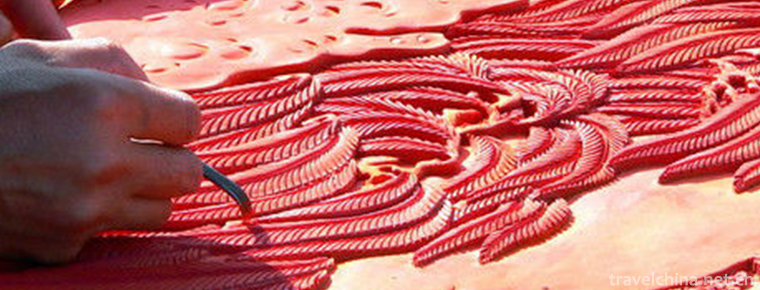
-
Fangte Fantasy Kingdom Scenic Spot in Qingdao City
Fangte Fantasy Kingdom of Qingdao is located in Lannan Road, Hongdao Street, Hongdao Hi-tech Zone, Qingdao City, Shandong Province. It is the core high-tech cultural amusement .
Views: 176 Time 2019-02-07 -
Firing Techniques of Longquan Celadon
Longquan celadon firing technology, the traditional ceramic technology of Longquan City, Lishui, Zhejiang Province, is one of the national intangible cultural heritage..
Views: 117 Time 2019-05-14 -
Legend of Lugou Bridge
The legend of Lugou Bridge is very rich in content, including the construction of Lugou Bridge, the lion on Lugou Bridge, Lugou pier chopping dragon and sword, Lugou Xiaoyue, Lugou Bridge and Wanping .
Views: 364 Time 2019-05-15 -
Tang Sancai Techniques
Tang tri coloured firing technique originated from the early Tang Dynasty. The tri coloured glazed pottery of Tang Dynasty, as the essence of traditional Chinese art in the Tang Dynasty, has a history.
Views: 121 Time 2019-06-18 -
Flower hopping shed
Dancing Huapeng, introduced from Fujian in Ming Dynasty, is an ancient traditional folk dance, belonging to Nuo dance. It has a fixed "Keben" (singing desk book), which is divided into 18 br.
Views: 247 Time 2019-06-21 -
Recitative
Recitation is a local traditional music form in Changzhou City, Jiangsu Province, which has a high reputation at home and abroad. The art of reciting belongs to "minority culture", which is .
Views: 91 Time 2019-07-13 -
Fishermens Opening and Xieyang Festival
Fishermen's opening and Xieyang Festival is a special folk activity in coastal areas of China. It is mainly spread in Xiangshan County, Daishan County, Rongcheng City, Rizhao City and Jimo City in Zhe.
Views: 278 Time 2019-07-14 -
Panzhihua after liberation
After liberation, Miyi County was established in some areas of Huili and Dechang in 1951, and renamed as Miyi County the next year, which was subordinate to Xichang District of Xikang province (due to its unique climate, rich products, especially rich in rice, and three crops a year, .
Views: 135 Time 2020-12-14 -
Sports in Panzhihua
By the end of 2018, Panzhihua had 21 stadiums (gymnasiums), 56 sports social groups at all levels, 694 national fitness routes and 263 social sports guidance stations. The city's various sports teams won 80 gold medals, 91 silver medals and 72 bronze medals in provincial competitions. 124 national fitness activities were held throughout the year, with 460000 participants..
Views: 323 Time 2020-12-14 -
Natural disasters in Mianyang
Earthquake: Mianyang City is located in the western mountain area, namely Pingwu, Beichuan and Anxian mountains, and the Northwest Mountainous Area of Jiangyou, which is one of the earthquake prone areas in Sichuan Province. .
Views: 126 Time 2020-12-14 -
Guangan Airlines
There is no airport in Guang'an, but there are many airports around it. At the same time, Guang'an terminal building of Chongqing Jiangbei International Airport has been built in the urban area. Guang'an is 110 kilometers away from Chongqing Jian.
Views: 170 Time 2020-12-19 -
Guangan bus
In the main urban area of Guang'an City, there are not only urban buses directly to Deng Xiaoping's hometown scenic spot, Shenlong mountain Ba Ren stone city, Siyuan square, but also one-day tour through bus to Huaying Mountain, baoz.
Views: 303 Time 2020-12-19
